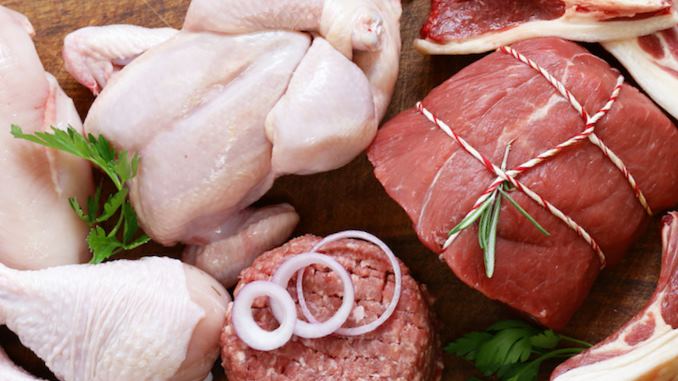Meat comes in a range of varieties, many of which have been primary human intake for millennials.
They, in general, boast a high nutritional content and contain a wide array of essential minerals. Today’s article will unveil 18 common types of meat, their nutritional profile, unique characteristics, and potential problems.
Chicken
Nowadays, chicken is the most often served poultry. Owing to its adaptability and lower fat level, chicken becomes a staple ingredient. According to experts, chicken is the most favorite white meat all across the globe.
According to experts, chicken breast is among the healthiest protein options you can purchase. So a 3oz (85 g) portion of the chicken breast offers 170 calories plus only 7 grams of fat. It moreover boasts 25 grams of protein with little iron.
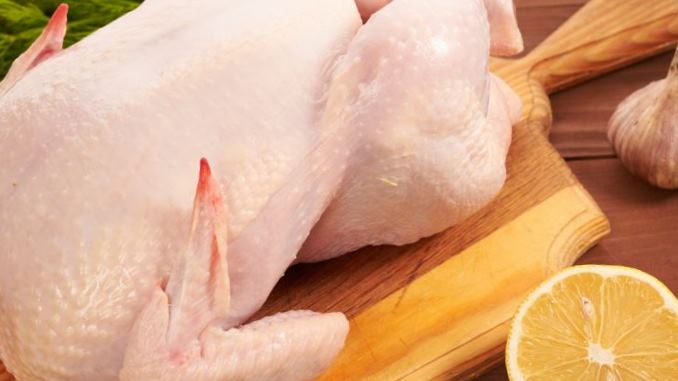
Different parts of the chicken are higher in calories. For example, in a 3oz portion, a drumstick provides 180 calories, a thigh boasts 210 calories, and a wing offers 240 calories.
In addition to being less expensive than beef, chicken also has a lower fat content. As a result, chicken has approximately a comparable proportion of protein to beef in protein content.
However, salmonella infection is a significant issue when it comes to poultry. Food contaminated with Salmonella and E.coli can cause diarrhea and other dangerous diseases in humans.
As a result, we recommend maintaining a high level of cleanliness when cooking and processing chicken for eating to reduce the chance of getting an infection.
As it turns out, customers care about the condition of hens as well. Consumers valued chicken welfare higher than price when deciding what sort of chicken to purchase in a survey.
Read more:
- How long do you fry frozen chicken wings?
- Can you marinate frozen chicken?
- How long to boil frozen chicken?
- Chicken breast vs chicken tenderloin
Turkey
Turkey is a big fowl species that belong to the same group of white meat as chickens. Compared to chicken, turkey flesh has a somewhat deeper color, but it has lower calories.
If you’re looking for a renowned white meat option, turkey isn’t as well-known as chicken is. However, even though turkey parts, notably the breast, are less juicy than chicken meat, both are a plentiful supply of lean protein.
A 3oz (85 g) serving of turkey breast contains 160 calories, with the thigh, drumstick, and wing possessing slightly more. Like chicken, turkey is an excellent source of healthy protein and has generous amounts of B-group vitamins.
Plenty of the advantages of consuming turkey are comparable to those of having chicken. Its breast, drumsticks, and wings are excellent sources of low-fat meat. Moreover, Turkey is a very affordable ingredient that comes packed with nutrients.
It’s no surprise that because it’s fowl protein, turkey is susceptible to various bacterial infections. Many scientists believe that this infection of turkey flesh with E. coli, Salmonella, or Listeria relates to several ailments.
While prepping and cooking this poultry, use the same stringent cleanliness measures as with chicken.
Duck
Duck is also an example of a white meat group. Although the color of duck flesh is somewhat deeper compared to chicken and turkey, people classify it as white meat.
The Peking duck is a famous Chinese delicacy. Besides the roasted breast, you may also prepare duck pate utilizing duck organs or cooking the breast with the skin.
Like other poultry, duck meat is an abundant supply of protein and many vitamins and minerals.
4.5 milligrams of iron, 13.9 milligrams of selenium, and 186 milligrams of phosphorus are available in 100 grams of skinless duck breast. Therefore, approximately 20 to 25% of your necessary daily consumption is in these nutritional figures (RDI).
Duck is a nutrient-packed kind of meat, making it a fantastic choice for a healthy diet. As a bonus, duck is an excellent supply of antioxidants once appropriately prepared. According to research, roasted duck flesh carries more antioxidants than raw meat.
If you want to cook a duck by yourself, you have very little to worry about. However, when preparing duck at home, be careful to take the skin out before consuming it to reduce the saturated fat level of this luscious fowl meal.
Goose
Although this isn’t a prevalent fowl species, an additional selection for white meat is loose, so it might be challenging to get.
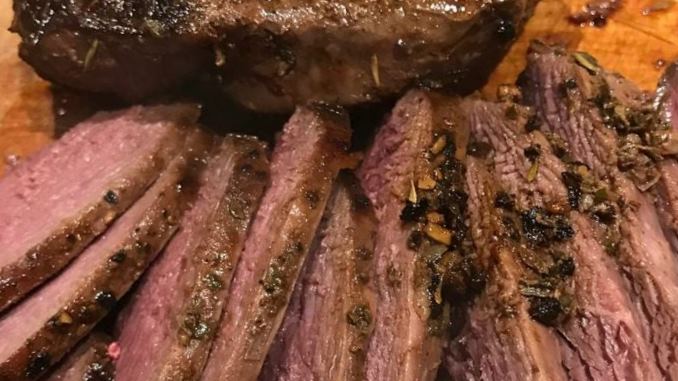
Like any other poultry, this white meat comes packed with lots of protein and less fat once you remove the skin. In addition, cooked goose contains vitamins B6, niacin, riboflavin, vitamin B12, and other nutrients. Selenium and iron are also abundant in geese.
Pheasant
People consider pheasant a ” high-priced ” protein, a renowned game in Europe and the United States. In addition, people consider pheasant a “premium” protein because of its delicious taste.
Compared to different fowl species, the pheasant is a great provider of B vitamins. Most of them are wild or come from “cage-free” ranches where they gain access to grass.
Although pheasant meat has no health risks, it’s advisable to cook this meat thoroughly (as with other poultry) to reduce the danger of foodborne illness.
Antelope
These species, which resemble deer, belong to a bigger ruminant group involving goats and oxen.
Antelope, mild-tasting, tend to be relatively low-fat due to their active lifestyle and healthy intake. Thus, their flesh is much healthier than other red meat. At the same time, Antelope fat carries a more balanced ratio of polyunsaturated fatty acids than those from other animals.
For a 3oz portion, people consume 110 to 130 calories depending on different cuts, with fat accounting for 2 grams and protein taking up to 25 grams.
Apart from that, antelope share a comparable vitamin and mineral profile to beef. Thus, antelope flesh is a rich source of iron (5 mg/oz), B12 (3.6 mcg/4 oz), B6, niacin, and riboflavin.
Beef
Pork and chicken are also widespread, but beef is the most popular type of red meat. If taken in moderation, red meat could be relatively beneficial to your health. Beef, for instance, is a significant supply of iron, vitamin B12, plus zinc.
According to several studies, grass-fed beef tends to offer the healthiest meat cuts. For example, 3oz of ground grass-fed beef usually consists of 19 grams of protein, 12 grams of fat. The serving also boasts a lot of good acids like the omega-3 fatty or Linoleic.

Also, the National Health Service claimed that beef is a nutritious ingredient of a balanced dietary pattern for many people. Yet, portion control and a focus on choosing lean meat are crucial factors.
No proof shows that moderate consumption of lean beef raises your risk of heart disease because high-fat red meat contains cholesterol. However, according to some studies, processed beef may pose a health risk.
The preparing processes of red meat are also a topic of concern. Research shows that high-heat beef cooking might lead to the formation of carcinogenic substances, a toxin that raises the risk of several malignancies.
Related:
Pork
As a result of its high myoglobin content, pork gets categorized as red meat.
Pork is among the most preferred proteins all around the globe because of its affordability and impressive nutrient profile. However, pork’s specific nutrient content differs based on particular cuts, as it does with other meats.
Indeed, research revealed that replacing lean pork with beef or chicken led to fat loss. Therefore, if eaten in balance, lean pork is just as good as beef or chicken.
An 85-gram portion of roasted pork tenderloin (248 calories), for instance, consists of as low as 3.5 grams of fat. Pork chops feature 11 grams of fat per portion, whereas spareribs carry 21 g of fat per dish. At the same time, like other red meats, pork is an excellent supply of protein plus iron.
In addition, pork is also an excellent source of essential vitamins and minerals. Pork loin, for example, is rich in thiamine, niacin, plus vitamin B6. Nutritionally speaking, they’re necessary for healthy metabolic activities and the cardiovascular system.
However, the best thing about pork is that its cuts are super affordable despite its high nutrient content.
Yet, since specific pork chops possess lots of fat content, consuming too much of them may result in excessive cholesterol, the leading cause of most cardiovascular problems. At the same time, omega-6 fatty acids are abundant in pork, leading to a deficiency of omega-3 fats in the diet.
In addition, pork is also susceptible to many parasites or bacterial disease infections. As a result, it’s crucial to process pork before consumption carefully.
Read more:
- Can you slice and fry a gammon joint?
- Can you slice ham on a mandolin?
- How thin to slice deli meat?
- Salami vs pepperoni
- Pork loin vs pork chop
- Pork loin vs pork shoulder
- Pork belly substitutes
Boar
Unlike different red meats, wild boar’s taste is strong and somewhat earthy and rich. It is also fuller-bodied and leaner compared to comparable games. However, the techniques and approaches are just like every other protein when it comes to cooking and serving.
It’s possible to perform roasted tenderloin at moderate heat. On the other hand, feel free to barbecue or pan-fry steak, minced boar, and chaps with seasonings and herbs (according to your preference). If you want to have a stew, pot-roasted, or seared boar cuts, using the shanks and short ribs is the best choice.
When it comes to nutrient content, there isn’t much to discuss. With a 3oz serving of wild boar, you’ll consume 104 calories and 2.83g of fat. Thus, it’s advisable not to have boar for frequent eating as it can quickly raise your cholesterol level and lead to several heart-related diseases.
Bison
Compared to other red meats, bison is a much healthier and low-fat option. As a result, it is a good protein substitute for anyone who wants to minimize their fat or calorie consumption.
It offers a comparable mouthfeel to beef with a sharper flavor. At the same time, bison is protein-packed and cholesterol-rich, as explained by the high 152 calories with 7.3 grams of fat in a 3oz serving. Yet, they are an excellent source of minerals as they contain 15% of iron and 1.2% of calcium.
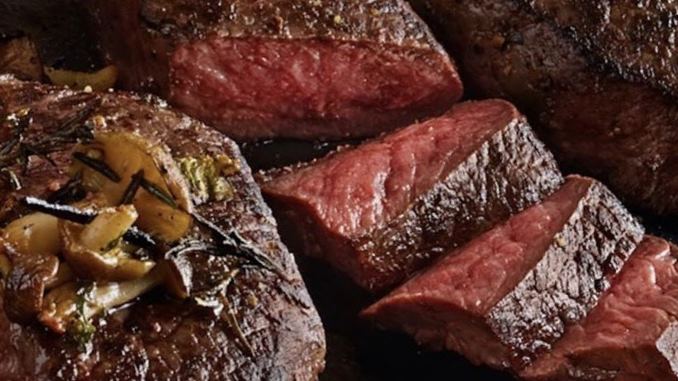
In cooking, you can process and serve it similarly to beef (making grills, stews, and barbecues and even putting it in hamburger patties once getting ground).
However, compared to alternative game meats, bison might be excessively pricey, making it hard to afford for many people.
Lamb and Mutton Meat
Do you know that the leanest cuts of mutton/lamb are among the healthiest kinds of red protein? Indeed, as a supply of all vital amino acids plus a high protein value, lamb meat is a beneficial choice for your health.
Note: For your information, the main distinction between mutton and lamb protein is that mutton is the flesh of full-grown sheep instead of lambs.
An 85-gram portion of cooked lamb includes 20 grams of protein, accounting for 42% of the recommended daily intake. As a bonus, lamb is also an excellent supply of vitamins B12 and niacin.
Notably, the fat content in this lamb serving equals up to 8.6 grams – more than half of which is unsaturated fat. Thus, frequent consumption of lamb/mutton protein isn’t advisable. Although it sounds alarming, keep in mind that the fat level of lamb ranges considerably depending on the cut you choose.
For the healthiest lamb consumption, consider leaner cuts such as the tenderloin and thigh. However, remember that even parts of lamb having the fat removed, such as ribs or shoulders, could offer substantially greater calories than fat-free parts.
Adding extra lamb to your meals comes with a price (we mean real money). Meat like lamb or mutton is usually very costly compared to pork, beef, or chicken. Also, similar to other red meats, avoid high-heat processing to minimize the development of carcinogenic toxins.
Fish
Besides small and medium-sized fish consumption, certain countries fish enormous fish such as dolphins and whales for human intake.
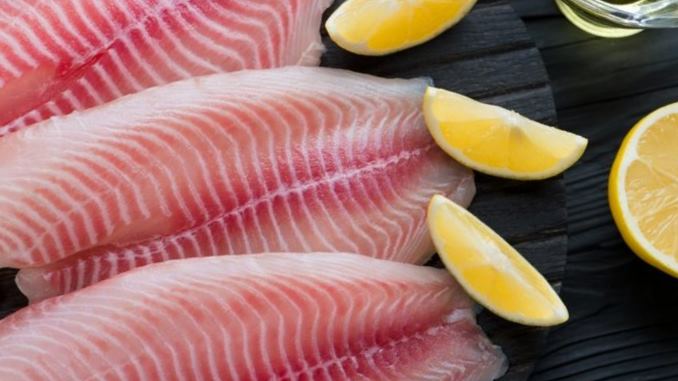
Compared to other types of meat, fish is among the healthiest of them all. Indeed, in its MedlinePlus project, the National Institute of Health promotes fish as a lean protein substitute to red meats.
Take a look at their nutrient value: A portion of pink salmon provides merely 127 calories, 4 grams of fat, and 57 milligrams of cholesterol. In other words, in a typical meal with fish (4 servings), you’ll get 20 to 25 grams of protein and 0.33 milligrams of iron. Moreover, this meat is also rich in omega-3 fatty acids, essential for brain and nervous system development.
However, although smaller species such as sardines are strongly advisable, according to experts, larger fish, including tuna, pose the threat of carrying harmful mercury. Because of this, it is best to limit the intake of larger fish.
Related:
Goat Meat
Nowadays, several varieties of meat are healthier than others, but goat meat is among the healthiest.
Indeed, as a healthy alternative to pork and beef, goat meat offers fewer calories yet the equivalent protein content. You can also enjoy it without feeling guilty because it’s low in cholesterol and fat.
Moreover, the nutrient profile of goat meat demonstrates how healthy this protein is. An 85-gram portion of goat meat delivers only 122 calories plus 2.5 grams of fat and 23 grams of protein. At the same time, this meat is also much higher in iron than beef, chicken, and pork.
While people in the US and northern Europe seldom see goat meat as food, it is among the most favorite proteins in the Mediterranean, African, and Middle Eastern cultures. Indeed, it appeared in many local dishes like stews, roasts, grilled dishes, and curries.
Venison
Like other lean red meats, venison, also known as deer meat, boasts numerous health benefits.
While venison is one of the best kinds of lean protein, its high price deters most people from consuming it. Also, despite having relatively low fat, which gives people the thought of a dry texture, deer meat offers a lot of taste.
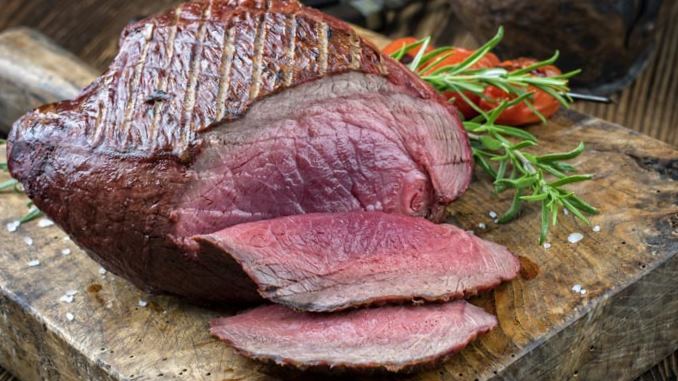
With its nutritional content, it is undeniable that venison is an excellent alternative to red meat. It is rich in protein (26 grams) but also low in calories (128) and fat (2 grams), of which more than half is unsaturated (in a 3oz serving). At the same time, there are many vital components in venison, including all of the B vitamins.
Elk
Like venison or boar, elk is also red game meat, which offers many health benefits.
Its most delicious parts include the loin, upper shoulders, hindquarters (including the brisket), neck, ribs, and shanks. Same as other meats, people can process elk using different cuts and methods.
While elk loin is the perfect choice for steaks (which people quickly cook over high temperatures), its front shoulders are great for burgers and sausages. At the same time, you can also make slow-roasted brisket which is delicate and melts in your mouth.
As elk is a lean protein, it’s no surprise that a 3oz elk serving boasts 94 calories with 1.23 grams of fat, which is by far one of the most impressive numbers. It also features 13% of iron and 6% of potassium, which are crucial minerals for health.
Shrimp
US consumers prefer shrimp over any other type of seafood, according to a recent survey. As a result, they consume more than 25% of the country’s yearly seafood intake. If you do the math, an average American consumes 4 pounds of shrimp each year.
While being protein-rich and low-fat, shrimp is also a good supply of omega-3 fatty acids. However, crustaceans like shrimp have one problem: they possess higher salt and cholesterol levels than different fish and shellfish types. Thus, people with certain health conditions might need to reconsider eating them too often.
In general, a 3oz portion of shrimp has 100 calories and 1.5 grams of fat. Moreover, the same-sized serving contains 4% of vitamin A, 8% of calcium, 2% of iron, and notably, 60% of selenium. This selenium high content benefits many people owing to its superb antioxidant qualities.
Related:
Rabbit Meat
Given that people nowadays raise rabbits for food purposes, it belongs to the category of game meats. Like other red game meats, rabbit is lean meat acting as a great source of protein and minerals.
Although it is a healthful protein option for many people, rabbit is a strange ingredient in most regions. However, in cultures where people do consume them, rabbit meat yields a delicious, low-calorie dish.
Rabbit has a superior nutrient content and calorie benefit than beef or pork. Indeed, 3oz of stewed rabbit serving provides approximately 147 calories and below 3 grams of fat. There are also 28 grams of protein and a healthy number of vitamins and minerals in the same size serving as well.
You could gain a great deal of vitamin B12 from rabbit meat. In only 85 grams, people may fulfill their daily vitamin B12 needs. In addition, selenium (13%) with zinc (13%) are also abundant in the meat (18% RDI), which is the key to sustaining a better immunity and circulatory system.
However, there is a dangerous disease called tularemia in wild rabbits, which can cause serious health issues. Thus, make sure to cook rabbit meat thoroughly to prevent this disease from passing on to consumers.
Alligator
Food lovers throughout the world enjoy having alligator meats, a rare delicacy of Florida. Alligator meat has a subtle taste and may easily be replaced for chicken, lamb, or fish in most dishes.
Yet, before getting in any further, it’s worth noting that in the United States, American alligators aren’t on the edge of distinction anymore. Their removal from the endangered species category in 1987 was an outcome of efficient control by farmers and authorities.
Low-fat and full of protein, alligator meat is a healthy alternative to beef. A range of cuts is accessible, notably tails, fillets, ribs, even wings. However, tail meat is the most delicate and closest to veal in mouthfeel when it comes to the best cuts of meat.
Typically, a 3oz serving of alligator offers 232 calories with 4 grams of fat, which is relatively low compared to many other proteins. However, what makes up for that is the high concentration of minerals and vitamins, in which vitamin A accounts for 62%, calcium content takes up 0.9%, and iron level is up to 8%.
Conclusion
Meat plays an indispensable role in our lives. Indeed, it has been our primary source of protein for centuries and acts as an important link in the food chain. Yet, many of us lack knowledge of them! Hopefully, today’s post has helped you understand different types of meat and their profile. Off we go!

